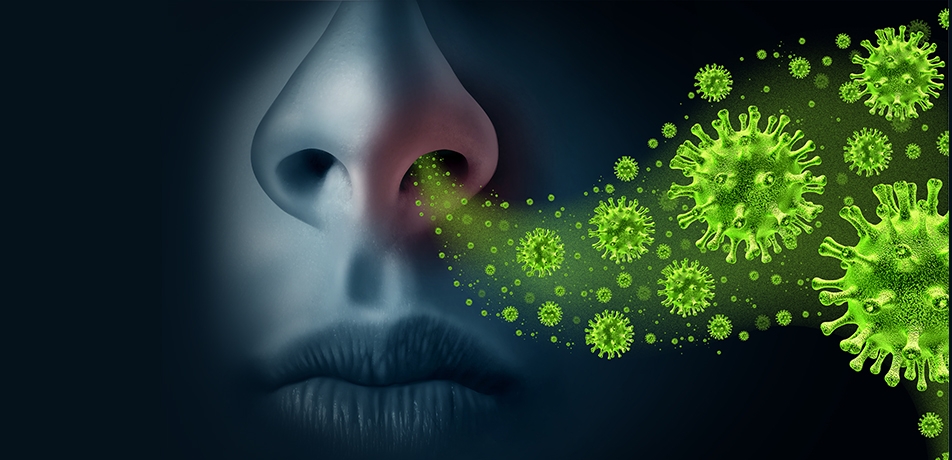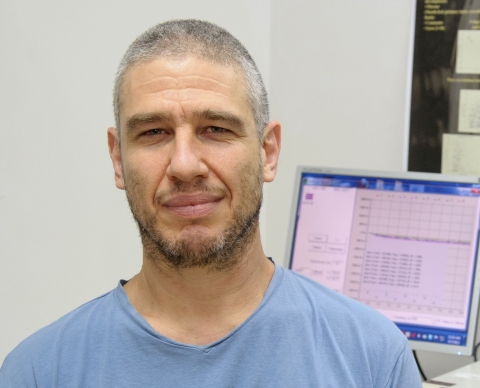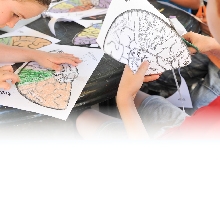A sniff test for coronavirus?
SmellTracker could support early COVID-19 diagnosis
Briefs

Among more than 50 Weizmann Institute labs seeking answers about the coronavirus pandemic, one team is focusing on an early warning sign that might lead to the early diagnosis of COVID-19: the loss of a sense of smell.
Prof. Noam Sobel, of the Department of Neurobiology, is a leading authority on how olfaction affects human behavior and health. Data emerging from the coronavirus pandemic show that many patients experience a temporary loss of their sense of smell. So dramatic is this loss that, in some countries, patients who report a sudden loss of olfactory acuity are declared to be coronavirus patients, even without further testing. The CDC recently added olfactory loss as a formal symptom of COVID-19.
Recognizing that loss of the ability to smell could serve as an early warning sign of infection, Prof. Sobel created a platform that allows people to track their own olfactory sensitivity on a regular basis. Developed together with clinical colleagues at the Wolfson Medical Center in Holon, Prof. Sobel’s SmellTracker is an online tool that enables self-monitoring through an algorithm that charts smell perception using household items. Thanks in part to a user interface that offers 13 different language options, people are signing up to use SmellTracker from all over the world, with an average rate of 200 new users every hour.
Through the SmellTracker website, individuals are asked to select five items they have at home, and which they are willing to sniff often. Choices include honey, peanut butter, vinegar, freshly chopped garlic, and toothpaste. Users are asked to adjust on-screen sliders to rate each scent’s strength and pleasantness. If sensitivity to an odor changes significantly, SmellTracker displays a red screen, a sign that users’ sense of smell is blunted—a possible early indicator of coronavirus infection.
Not everyone infected with COVID-19 experiences olfactory loss, and preliminary studies conducted in several countries—including Israel and Iran—show that this symptom appears in about 60% of patients. However, because a small fraction of the patients who experience olfactory symptoms will deteriorate very suddenly, Prof. Sobel’s new approach may prove valuable.
The SmellTracker system may also help scientists and clinicians better understand and differentiate between various strains of COVID-19. Scientists estimate that there are currently eight active strains circulating around the world. Prof. Sobel thinks that olfactory loss may be a differentiating symptom that would allow clinicians to distinguish one strain from another, something that would allow more targeted and effective treatment of individual patients.
The SmellTracker project is one of three Covid-19 projects in the Sobel lab. In a second project, Prof. Sobel and his team are using a device called an electronic nose in order to smell people in an effort to diagnose the disease.
In a third project, the scientists have developed a highly sensitive tool for measuring nasal airflow that may also aid in the battle against the coronavirus pandemic. This wearable sensor weighs six grams and transmits airflow data via Bluetooth. “The goal is to try to catch those patients who can breathe on their own, but are in danger of losing this ability quickly,” Prof. Sobel says. “This can be a matter of life and death.”
Prof. Noam Sobel is head of the Azrieli National Institute for Human Brain Imaging and Research; his research is supported by the Norman and Helen Asher Center for Human Brain Imaging; the Nadia Jaglom Laboratory for the Research in the Neurobiology of Olfaction; the Adelis Foundation; and the Rob and Cheryl McEwen Fund for Brain Research. Prof. Sobel is the incumbent of the Sara and Michael Sela Professorial Chair of Neurobiology.

Prof. Noam Sobel








